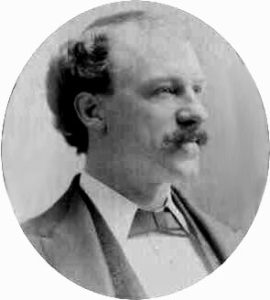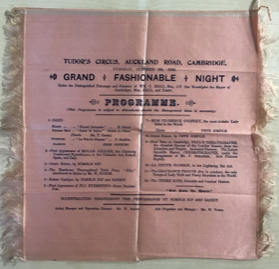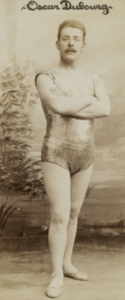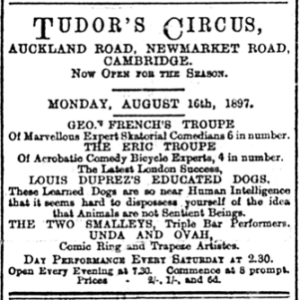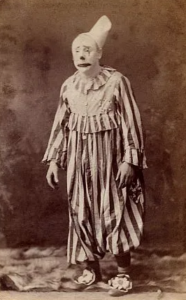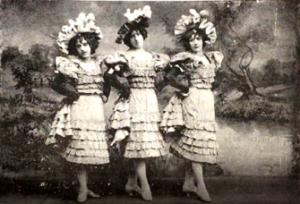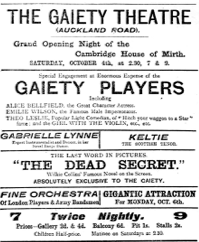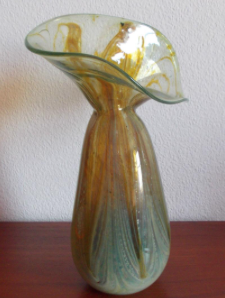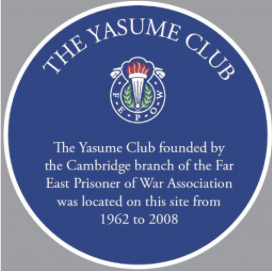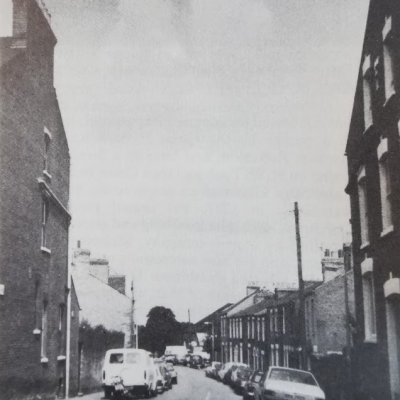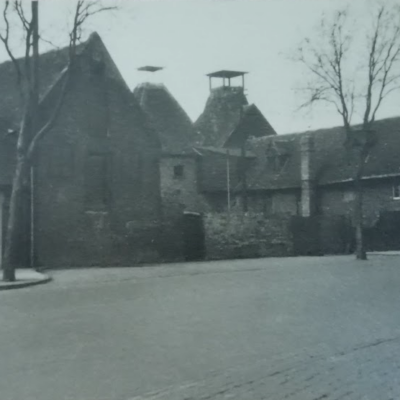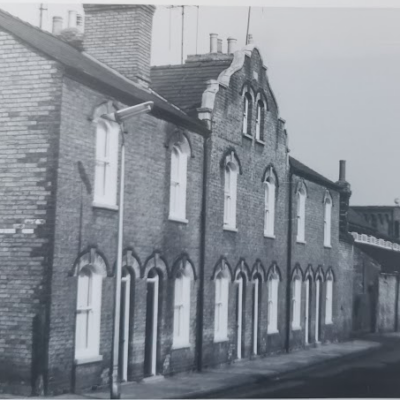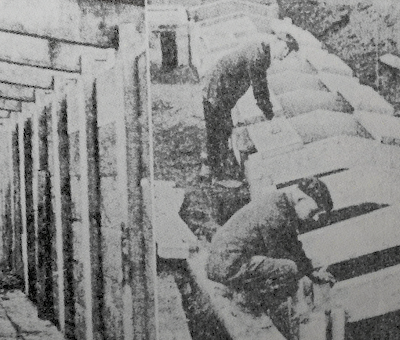Search by topic
- archaeology
- Building of Local Interest
- chapel
- charity
- church
- crime
- dressmaker
- fire
- Great Eastern Railway
- Listed building
- Mapping Relief
- medieval
- oral history
- poverty
- Public House
- Religious House
- Roman
- scholar
- school
- Then and Now
- tudor
- women
- work
- world war one
- world war two
Search by text
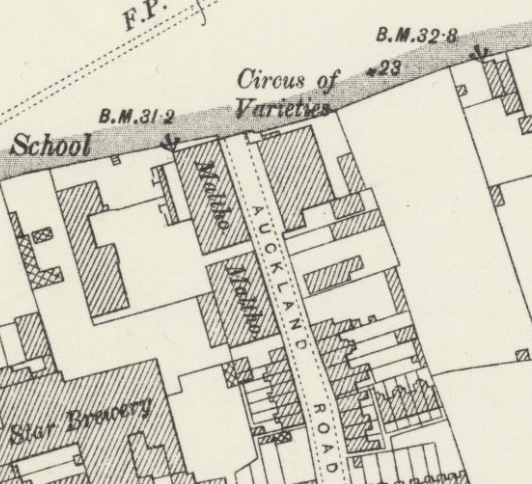 Auckland Road, 1901
Auckland Road, 1901Tudor’s New Circus, The Circus of Varieties, Gaiety Theatre, Hippodrome, Auckland Road
History of Tudor's Circus, Auckland Road
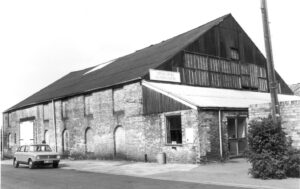
William Tudor’s 1896 circus building in Auckland Road, seen here in the 1980s (Cambridgeshire Collection, Cambridge Central Library)
Erica McDonald and Jim Smith (2023) kindly provided the following summary history for Capturing Cambridge and published their own website about William Tudor, his circus in Cambridge and his career at www.tudorscircuscambridge.uk in July 2024:
Tudor’s Circus, Auckland Road
In August 1896 William Tudor Hall (1853 to 1940), usually known as William Tudor, opened Tudor’s New Circus in newly built premises on the site next to Midsummer Common now occupied by Auckland Court. The land was owned by coachbuilder Thomas Askham of Newmarket Road. Tudor had managed temporary circuses nearby on Butt Green in 1888 (with Charlie Keith), 1893 and 1895 and his shows were well known in other towns, including Blyth in Northumberland and Ipswich.
Between 1888 and 1899, Willliam brought an astonishing range of animal and human acts to Butt Green and Auckland Road. He was a noted horse trainer but had multiple circus skills that he put to good use, while visitors included Josephine Mathews, possibly the first-ever female clown, Oscar Dubourg the Man Fish, and his own brother, clown Funny Fred Hall. Fred performed in Auckland Road in August 1898 but died in his lodgings in Willow Walk: his grave is to be found next to the path in the south-east corner of Mill Road cemetery. In October 1896, audiences saw moving pictures, probably for the first time in Cambridge, when Robert W Paul’s Cinematographe was one of the attractions.
Tudor moved on after his 1899 season, continuing to run circuses around the country. He was later a cinema and dancehall owner in Blyth, where he died in 1940. Thomas Askham took over the building, renaming it in 1900 the Circus of Varieties, which is how it is found on the 1901 Ordnance Survey map. Under various managers it was known as the Empire Circus of Varieties, the Grand Circus and Novelty Hippodrome, or just the Hippodrome. It gradually became less of a circus and more a variety theatre or music hall.
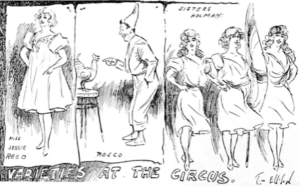
Talbot W Ellison’s drawings accompanied reviews of the Circus of Varieties (Cambridge Graphic 18.8.1900)
In 1902, 1903 and 1906 Askham unsuccessfully applied for a licence to present plays. In 1908 he and two colleagues were fined for presenting unlicensed dramas but in 1909 a licence application finally succeeded.
Askham died in 1912 and in 1913 his son Arthur again renamed the Hippodrome, which became the Gaiety Theatre. William Tudor and his ponies made a return visit in November that year. The Gaiety only lasted until 1914 and in November 1916 Arthur Askham was advertising all the fixtures and fittings for sale. In February 1917, again advertised as the Hippodrome, the building was providing, at no charge, a ‘Host of attractions, including the Scenic Switchback Railway, the place to spend a pleasant hour.’
By 1919 the Great Eastern Railway was using the premises as a garage and for the rest of its life it was either a garage or a warehouse. Cambridge Glassmakers, led by glass artist Dillon Clarke, briefly occupied part of the building in 1981, and from 1982 to 1987 she ran Midsummer Glassmakers there. The empty building was demolished and replaced by Auckland Court in 1993.
See 1900 Legal Case involving the Circus
You can read more about the circus at https://tudorscircuscambridge.uk
Riki McDonald and Jim Smith also gave a talk to Mill Road History Society about the circus in July 2025.
Contribute
Do you have any information about the people or places in this article? If so, then please let us know using the Contact page or by emailing capturingcambridge@
License
This work is licensed under CC BY-NC-SA 4.0





